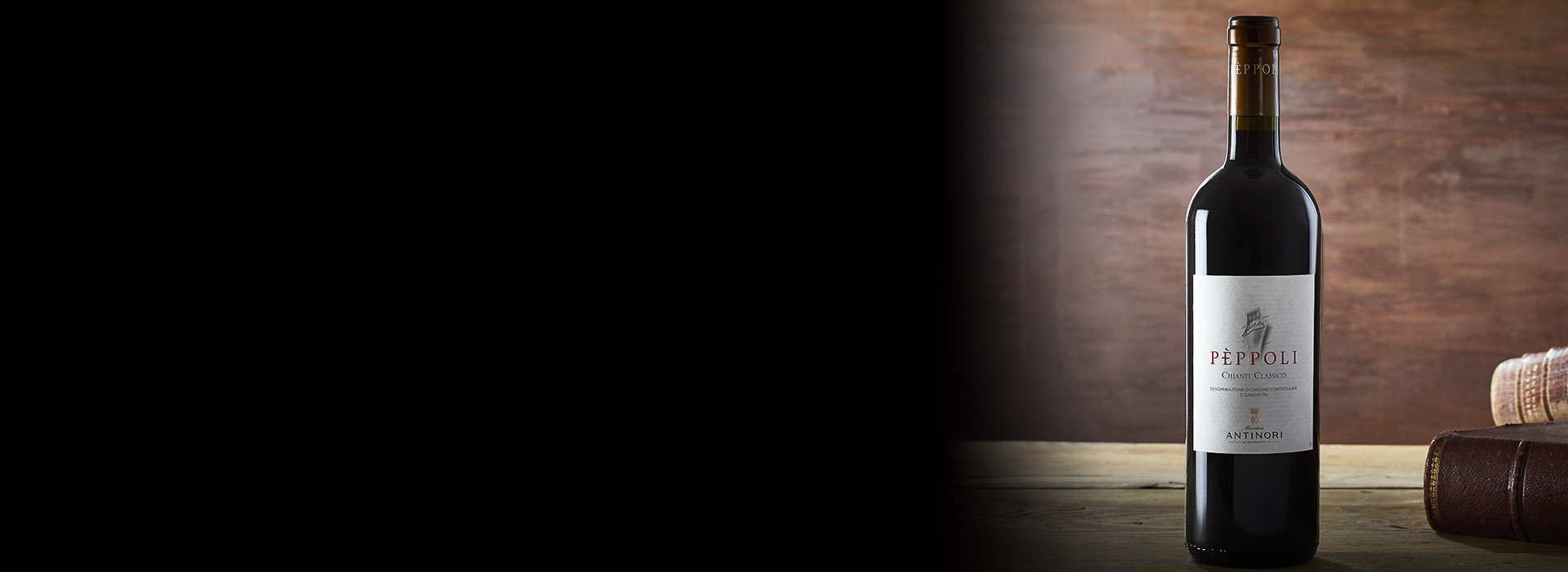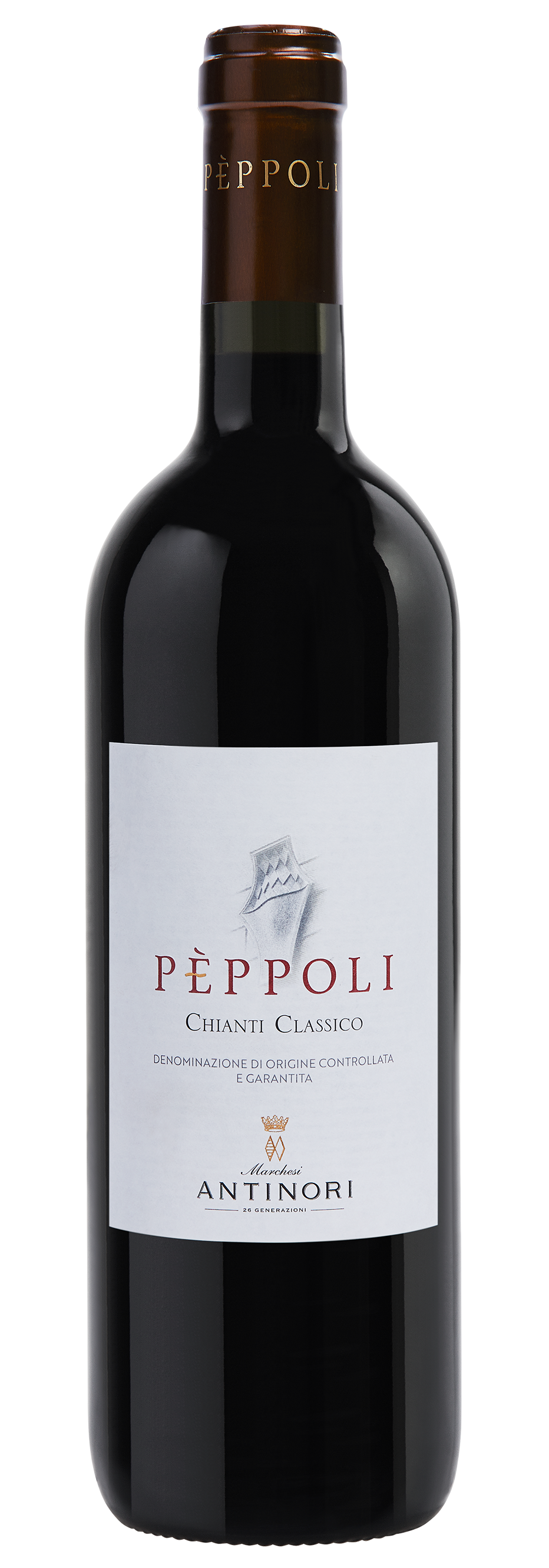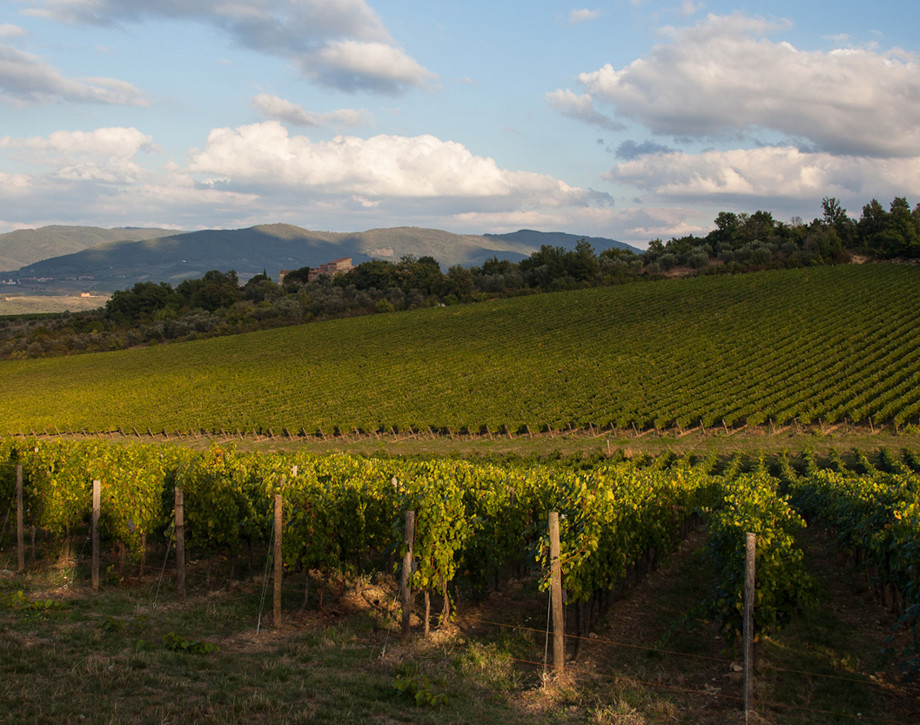Pèppoli

Climate
The first months of the year were characterized by cold temperatures and regular rainfall. The first half of February, in particular, was marked both by temperatures below the freezing point and abundant snowfall, phenomenon which, nonetheless, did not damage the vines. Early spring was cool and dry, causing a slight delay in bud burst and flowering compared to normal seasonal averages, and both April and May, instead, were somewhat rainy, of fundamental benefit in sustaining the vines during the lengthy period of summer drought which, beginning in June and continuing all the way up to the end of August, affected the growth and development both of the vegetation and of the dimension and weight of the grapes themselves. The rains which arrived at the end of August provided necessary relief and balanced growth, allowing all of the different grape varieties to continue the ripening process, while the month of September, mild in temperature and graced by light rainfall, allowed the grapes to mature both in terms of their sugars and other analytic values and in terms of their tannins and color. The picking, which began with Merlot and Syrah and finished with Sangiovese, took place during the second half of September, required a careful selection of the bunches in the vineyards, which guaranteed grapes of good ripeness and an important quality potential.
Vinification
The different grape varieties were fermented separately in order to obtain the maximum from each of them: the Sangiovese fermented for approximately ten days on their skins in stainless steel tanks, while the Merlot and Syrah were each fermented on their own with the aim of realizing fruity wines with soft tannins through a full control of fermentation temperatures. The malolactic fermentation was completed before the arrival of winter in all three varieties. The wine was blended at the beginning of the year and went into cask for a nine month aging period. The aging took place principally in Slavonian oak casks, with 10% of the volume, instead, aging in small oak barrels. The aging in large casks assisted in conserving the fruity notes of the fermentation and softening the tannins; the barrels instead, gave fragrant nuances which completed the aromatic gamut of the wine. Pèppoli was given several months of bottle aging before commercial release.
Historical Data
The Pèppoli vineyards produce a Chianti Classico that is a blend made from Sangiovese grapes and complementary varieties; Pèppoli is recognized and appreciated for the full expression of its fruit. A wine that represents the Chianti Classico territory and its historic grape variety with typical floral and fruity aromas. Pèppoli was first produced in 1985 and since 2013 part of the harvest undergoes vinification at the Antinori nel Chianti Classico cellars.
Tasting Notes
Ruby red in color, the 2012 Pèppoli is characterized by notes of cherries and raspberries, and the aromatic profile is completed by nuances of violets and vanilla, On the palate, the wine is tasty and balanced, lively in its acidity, a characteristic of Sangiovese-based wines. The fruity notes and the spices of the oak dominate the finish and aftertaste. The wine is soft in its tannins and long and lingering on the finish.
Awards
Wine Spectator 89/100 USA

The Wine
The Pèppoli vineyards produce a Chianti Classico that is a blend made from Sangiovese grapes and complementary varieties; Peppoli is recognized and appreciated for the full expression of its fruit. A wine that represents the Chianti Classico territory and its historic grape variety with typical floral and fruity aromas.

Climate
The first months of the year were characterized by cold temperatures and regular rainfall. The first half of February, in particular, was marked both by temperatures below the freezing point and abundant snowfall, phenomenon which, nonetheless, did not damage the vines. Early spring was cool and dry, causing a slight delay in bud burst and flowering compared to normal seasonal averages, and both April and May, instead, were somewhat rainy, of fundamental benefit in sustaining the vines during the lengthy period of summer drought which, beginning in June and continuing all the way up to the end of August, affected the growth and development both of the vegetation and of the dimension and weight of the grapes themselves. The rains which arrived at the end of August provided necessary relief and balanced growth, allowing all of the different grape varieties to continue the ripening process, while the month of September, mild in temperature and graced by light rainfall, allowed the grapes to mature both in terms of their sugars and other analytic values and in terms of their tannins and color. The picking, which began with Merlot and Syrah and finished with Sangiovese, took place during the second half of September, required a careful selection of the bunches in the vineyards, which guaranteed grapes of good ripeness and an important quality potential.
Vinification
The different grape varieties were fermented separately in order to obtain the maximum from each of them: the Sangiovese fermented for approximately ten days on their skins in stainless steel tanks, while the Merlot and Syrah were each fermented on their own with the aim of realizing fruity wines with soft tannins through a full control of fermentation temperatures. The malolactic fermentation was completed before the arrival of winter in all three varieties. The wine was blended at the beginning of the year and went into cask for a nine month aging period. The aging took place principally in Slavonian oak casks, with 10% of the volume, instead, aging in small oak barrels. The aging in large casks assisted in conserving the fruity notes of the fermentation and softening the tannins; the barrels instead, gave fragrant nuances which completed the aromatic gamut of the wine. Pèppoli was given several months of bottle aging before commercial release.
Historical Data
The Pèppoli vineyards produce a Chianti Classico that is a blend made from Sangiovese grapes and complementary varieties; Pèppoli is recognized and appreciated for the full expression of its fruit. A wine that represents the Chianti Classico territory and its historic grape variety with typical floral and fruity aromas. Pèppoli was first produced in 1985 and since 2013 part of the harvest undergoes vinification at the Antinori nel Chianti Classico cellars.
Tasting Notes
Ruby red in color, the 2012 Pèppoli is characterized by notes of cherries and raspberries, and the aromatic profile is completed by nuances of violets and vanilla, On the palate, the wine is tasty and balanced, lively in its acidity, a characteristic of Sangiovese-based wines. The fruity notes and the spices of the oak dominate the finish and aftertaste. The wine is soft in its tannins and long and lingering on the finish.
Awards
Wine Spectator 89/100 USA

Tenuta Pèppoli
The Pèppoli estate is located 5 kilometers north east of the Tenuta Tignanello estate with a total area of 100 hectares (247 acres) of which 50 hectares (123 acres) are planted with vineyards and is home to Peppoli Chianti Classico DOCG. The Peppoli estate has a long standing tradition for producing Peppoli Extra Virgin Olive Oil and Peppoli Red Wine Vinegar made by transforming Peppoli wine into vinegar using traditional methods.


















